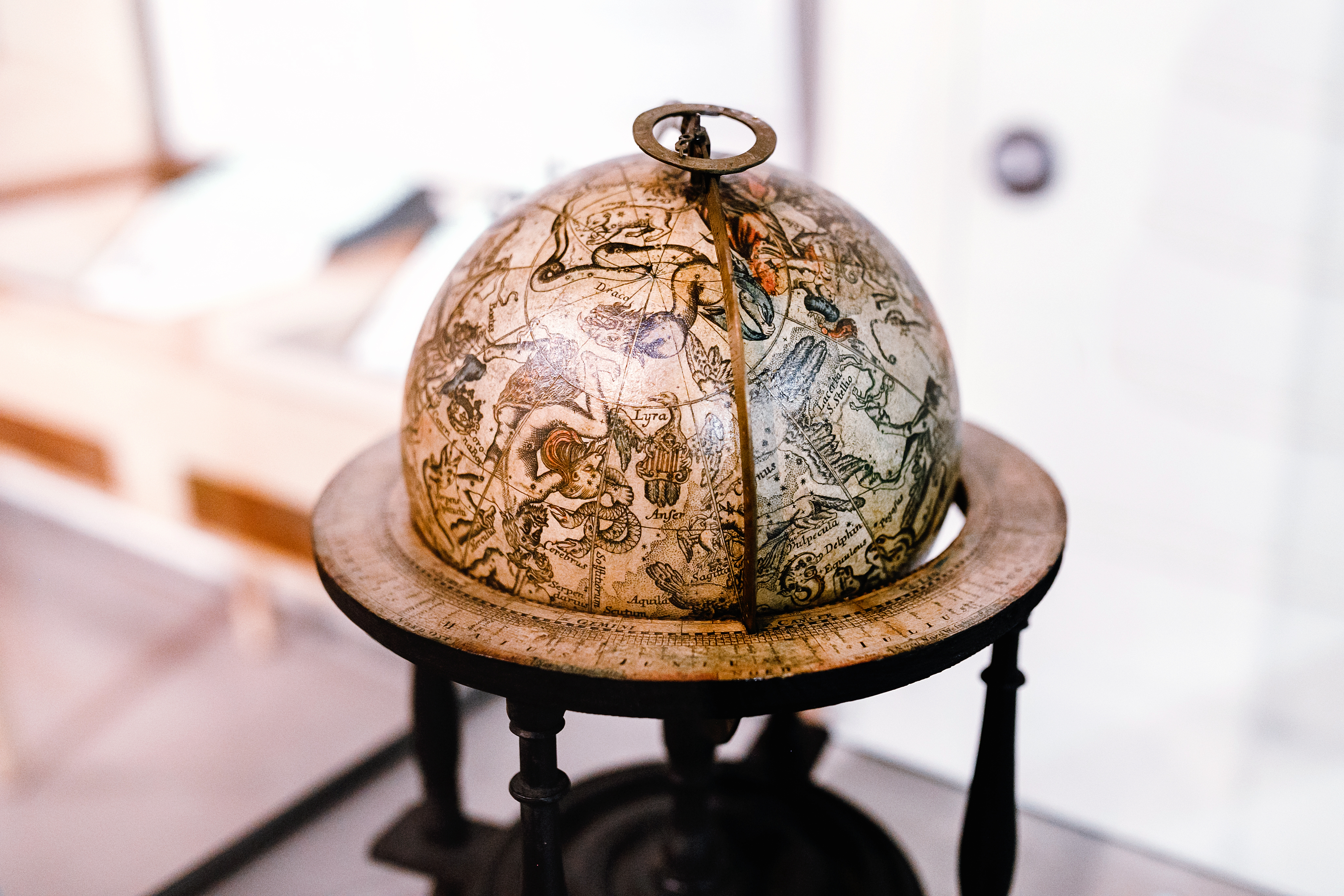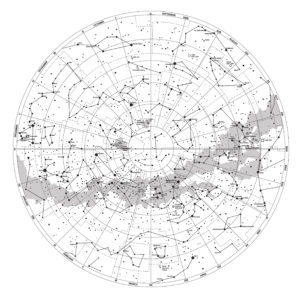The Astronomical Cartography: Star Charts and Celestial Globes

One of the most stunning natural sights is a clear, starry night sky. That vast expanse is humbling and intimidating in its size and beauty, a reminder that the universe is much bigger than we think it is. And though the stars and constellations might be far away, that doesn’t mean we can’t learn about each one. That’s where a celestial globe comes in.
A celestial globe allows us to map out the constellations and nebulae as if they’re all the same distance away. This article will discuss star charts and globes, their dimensions, history, and the modern options available to us.
What Is a Star Chart?

A star chart is no different from a map, except instead of states, countries, and oceans, a star chart features the constellations and stars in the sky. A regular globe might show additional geographical and topographical information. A world of the stars might depict galaxies, star clusters, and nebulae.
But a star chart isn’t just a picture of the solar system — it’s also an accurate guide on a grid system. This grid system allows you to locate and identify hundreds, or even thousands, of stars and other targets, like you would use latitude and longitude on a regular map.
Star Chart Dimensions
Star charts use the equatorial coordinate system to identify celestial objects’ positions. The origin is always in the center of the Earth, whether spherical or rectangular coordinates are used. This origin is a fundamental plane projecting Earth’s established equator onto the celestial sphere, thus forming the celestial equator; the primary direction is towards the vernal equinox.
With the origin of the astronomy globe at the center, the coordinates are geocentric, meaning they are seen from the center of the Earth if they are transparent and non-refracting. Due to the primary direction and fundamental plane, the coordinate system doesn’t rotate with the Earth despite being aligned with Earth’s equator and pole. It also has a right-handed-convention, meaning the coordinates are negative to the south and west and positive to the north and east in the plane.
Right ascension and declination are the pair that make up celestial spherical coordinates; they do not include a distance coordinate because they can be so great and varied, and we still lack a lot of information regarding their exact distances. Given this and the convenience of using the exact coordinates, we only focus on direction, which is the same for anyone observing it. Declination is measured in degrees, working similarly to latitude and longitude. Zero is the celestial equator, a negative value denoting the southern celestial hemisphere and a positive value for the northern celestial hemisphere. Right ascension, however, is measured in hours, minutes, and seconds, from 0 to 24 hours.
Telescopes equipped with setting circles and equatorial mounts use the equatorial coordinate system to find objects. In addition to a star chart or ephemeris, the setting circles are used to point the telescope in the direction of known objects.
What Is a Celestial Sphere and How Do You Read it?
So, what is a celestial globe or sphere? It’s a sphere used in astronomy with an arbitrarily long radius concentric with Earth. It’s like the underside of a dome, with all observed objects in the sky projected on the inside surface. Spherical astronomy is a practical tool that allows one to plot objects in space with unimportant or unknown distances.
Now that you know what it is, you must know how to use a celestial globe. The first thing to note is that distance is unimportant for a celestial sphere, and objects will all appear to be at the same distance away from you. Additionally, it will all appear to stand still on the celestial globe, ignoring Earth’s rotation and actual radius.

Because the sphere’s radius is unknown or infinite, any point within the dome can be classified as the center. It follows that every parallel line will appear to intersect the sphere at one point, in a coincident great circle, or a “vanishing circle,” whether they’re a mile or a galaxy apart. Thanks to this infinite radius, everyone looking at the sphere will see the same objects in the same direction. As mentioned above, right ascension and declination coordinates will help you identify the location of various objects in the sky.
First Depiction of Terrestrial and Celestial Spheres
Raphael’s The School of Athens is one of the earliest depictions of terrestrial and celestial globes. Two people hold two spheres in the bottom right corner of the painting. One sphere is blue with green and brown regions, while the other appears to be blue with white and yellow specks. It seems obvious what these two spheres represent: Earth and space.
The inclusion of these two spheres in the painting signifies the Greeks’ knowledge regarding Earth and the cosmos. The Greeks knew the Earth was spherical despite not having traversed the large majority of it yet. The ancient celestial globe with stars scattered around it is even more interesting to map out space. It points to the usefulness of mapping stars and playing with a sphere surrounding us rather than a flat map. It had such an impact that we continue to use the term “celestial sphere.”
Modern Representations of the Celestial Sphere
There are numerous modern representations of the celestial globe. Many globe manufacturers sell versions of celestial spheres so that you can buy a sky globe in several different colors and styles.
If you’re looking for an accurate, high-quality, and beautiful celestial globe, the Illuminated Constellation Globe from Replogle won’t disappoint. When not illuminated, it shows constellations, stars, and nebulae, but even more excitingly, you will see about 70 celestial images beautifully depicted and glowing when it is lit.
Nowadays, even stone spheres you can get that are polished and make beautiful pieces for fountains. They can float in a concave water fountain, allowing you to turn and maneuver them as you wish, though, depending on how heavy they are, this can be difficult. That’s why a standing or desk constellation globe is the better choice for a decorative piece that allows you to examine the stars.
Conclusion
Celestial globes have been around for centuries, giving us small insights into the vast and unknown universe around us. Knowing how to read and identify celestial objects on a globe will make it more than just beautiful and awe-inspiring, but educational too.
Now that you have the background information on celestial globes, it’s time to find one for yourself! Check out the Replogle Globes website for gorgeous globes, celestial and Earthbound. Or contact us directly. We offer a wide selection of standing and desk globes, including illuminated globes, globes for kids, and globes of all different colors.
